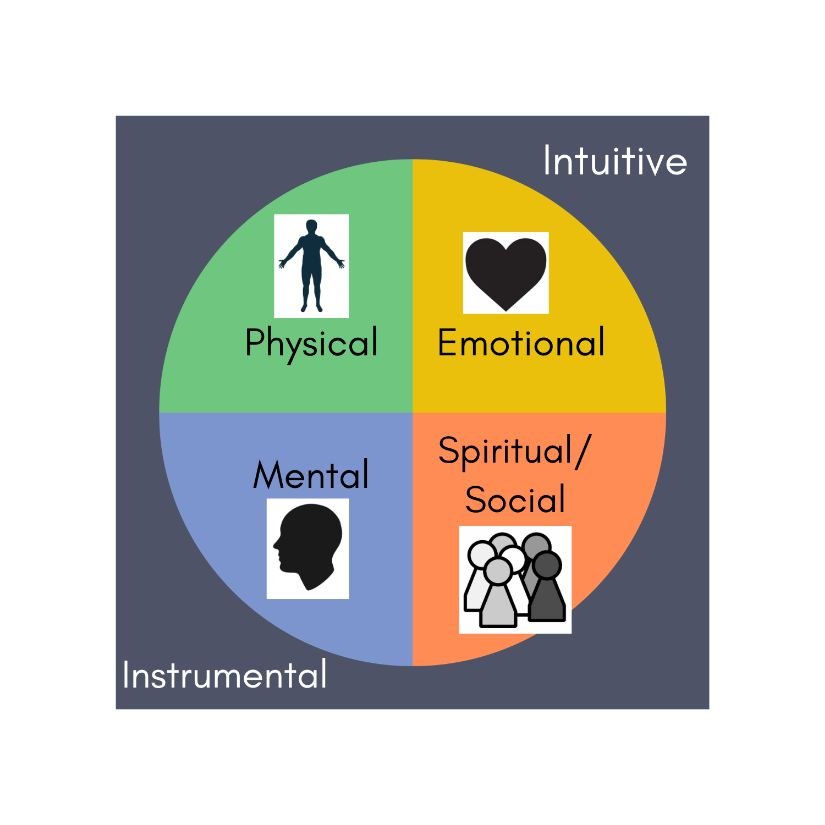Grieving In Style
Everyone grieves uniquely.
There is no right or wrong way to grieve.
The goal is not to “get over” “get past” “find closure” or “move beyond” grief. The goal is to learn how to live with grief.
Every loss we experience – both death-related and non-death-related - resurrects old/previous losses.
The experience of grief affects us at all levels of our being: Physically, Emotionally, Mentally, and Spiritually/Socially.
These are just some of the many truths I know about grief. And the one that I seem to return to again and again is the last one – that grief affects all parts of ourselves. In my grief circles, we affectionately refer to it as PEMS.
As human beings, we are wired for attachment. When we attach to someone or something, and that attachment is broken, we experience loss. It’s a pretty straightforward formula:
Attachment + Loss = Grief
What many people don’t realize – in part because of the prevailing misconception that grief is just about feeling sad – is that because we attach with our whole selves, we also grieve with our whole selves. Our tendency is to experience that attachment and loss in different ways, something researchers Terry Martin and Kenneth Doka call “Styles of Grieving”.
When loss hits, it can hit hard. Many think that the predominant way that grief shows up is in deep sorrow and tears. So if someone isn’t crying about their loss, then they aren’t really grieving. But when that wrecking ball hits, our reactions and responses can be as varied as we are:
After a loss, there is often an initial experience of shock and it can feel like our sense of safety in the world is shattered. Anxiety, worry, and fear are often common features of grief. Laying awake at night and not being able to shut your mind off? Coming home and putting your car keys in the fridge and milk in the cupboard? Not being able to concentrate at work or even read a book? This is your grief showing up in the mental or cognitive domain.
The energy our body expends following a significant loss can impact our immune system, affecting how our digestion, circulatory, respiratory, and other systems function. Headaches, having trouble sleeping or sleeping too much, a chronic sore neck, stomach upset, and other physical dysregulation are not always recognized as grief showing up in our bodies.
Grief impacts our sense of connection to the world and what is happening around and inside of us. Our worldview and values can be challenged following a significant loss, causing us to search for solace and meaning. Our traditional ways of making sense of things can be disrupted and who and what we turn to may change. We may find ourselves engaging in spiritual/social activities for the first time as the old ways no longer serve. Our sense of connection and resilience may eventually be strengthened after a period of uncertainty. How grief affects our spiritual/social realm will be different for each loss and change over time.
This expanded view of grief styles recognizes that not everyone’s grief manifests solely or even predominantly in the emotional realm. Folks who are mental or cognitive grievers alongside those whose grief manifests more in the physical world and who need to take action and stay busy, are given the name: Instrumental Grievers.
Traditional grief interventions - joining a support group, talking to a therapist or spiritual advisor – continue to appeal to Intuitive Grievers. People who feel and express a wide range of emotions from sorrow to anger and those whose faith and belief systems have been tested to the core by the death of a beloved may seek a deeper understanding of the meaning of life and death.
PEMS is a helpful model to remember when trying to understand both our own and others’ primary style of coping with grief: am I someone who likes to go running or drumming or practice yoga? Do I need to read a lot in order to try and understand my grief experience? Does it soothe me to increase my time in meditation or prayer? Or does it help me to induce a good cry and let go of some of the pent-up feelings by renting one of my favorite grief movies or looking through old pictures?
It’s helpful to notice and to be able to share with others how our grief normally shows up in us and also how we need to be taken care of in a “hit of grief”. And it’s also helpful to remember that everyone’s grief is unique and personal and will change over time. The more we understand our own grief styles, the better we will be at recognizing them in others. Learning how to live with grief is hard work. Affirming and validating our and others’ ways of responding to loss is a big step toward helping us all carry our grief with style.
“Grief is not about forgetting.
Grief allows us to heal, to remember with love rather than with pain.
It is a sorting process.
One by one, you let go of things that are gone and your mourn them.
One by one, you take hold of the things that have become part of who you are and build up again.”
- My Grandfather’s Blessings, Rachel Naomi Remen, MD



